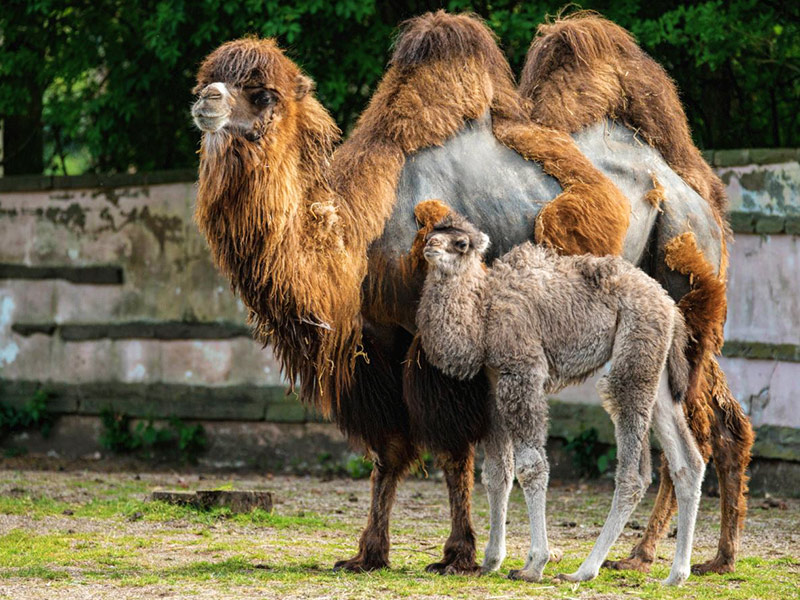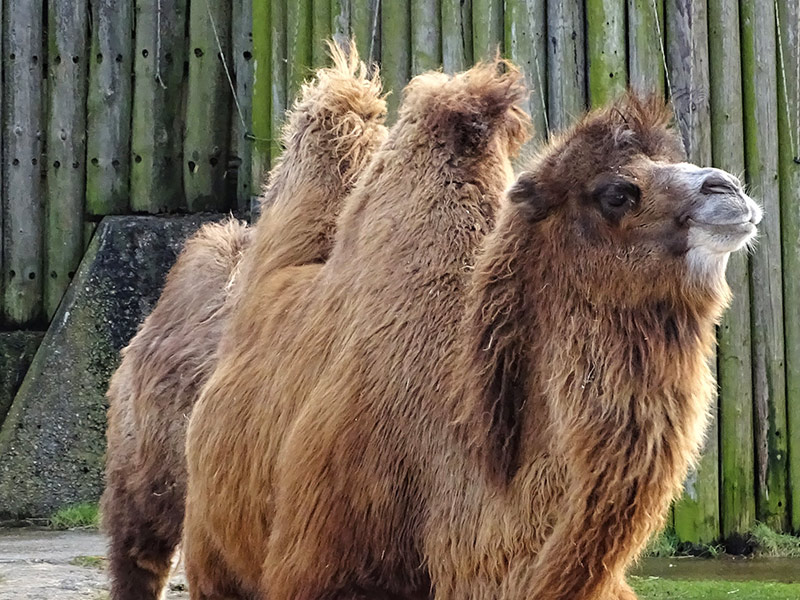Hurry! Become a member and save 20%!


Bactrian Camel










Bactrian camels are, unfortunately, critically endangered in the wild, although many have been domesticated and used for transport. Their numbers have dwindled due to hunting and the loss of their habitat to mining and industrialisation.
Bactrian camels originate from areas of Asia with a much colder climate than the one-humped, desert dwelling dromedary which happily lives in extremely high temperatures. They have adapted to the cold weather by growing a huge, thick coat in winter which falls out in big clumps in the spring. They also have long eyelashes, which, along with the sealable nostrils, help to keep out dust in the frequent sandstorms which occur. The two broad toes on each foot have undivided soles and are able to spread widely to assist with walking on sand.
Camels can live up to 50 years in captivity and can breed successfully. They have one calf which will be up on its feet and suckling within a very short time. Bactrian camels have two humps which store sufficient fat to see them through lean times unlike their one-humped counterparts in the desert. In the Zoo, they’re fed on specialised pellet, fruit and vegetables and, in the wild, mainly on plants. However, if food does become scarce, they have been known to eat ropes, sandals and even tents!
Get the best price!